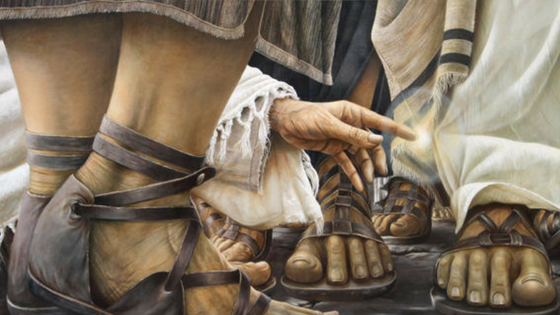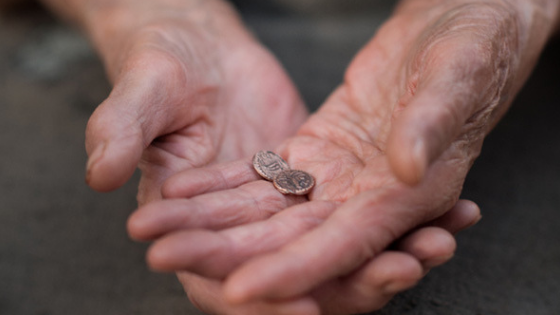The Thirteenth Sunday in Ordinary Time (1st July 2018)
Wisdom 1:13-15; 2:23-24; Ps 30; 2 Cor. 8:7,9, 13-15; Mk. 5:21-43
Theme: Present Presence
Download
 The readings for the 13th Sunday in Ordinary time remind us that our life is to be lived in awareness that we are fashioned in the image and likeness of God. This understanding leads us to see how in our relationships with all there is, we make manifest God’s nature and presence fully alive, one and whole with all of creation.
The readings for the 13th Sunday in Ordinary time remind us that our life is to be lived in awareness that we are fashioned in the image and likeness of God. This understanding leads us to see how in our relationships with all there is, we make manifest God’s nature and presence fully alive, one and whole with all of creation.
In Wisdom, we hear of how God’s delight is not on destruction of the living but on the goodness of all created creatures. Paul writes, in the second reading, reminding all to strive for equality in our relationships making true in our time the scripture saying: To the one who has much nothing was in excess and the one who had less, nothing was lacking; returning our view to the wholeness and oneness of God, present in all.
In today’s gospel, a Marcan “sandwich,” (Dwyer, 116) we are presented with a couple of miracle stories relating the lives of ordinary people, which apparently is more present in this Gospel than any other. (Levine, 88). We witness how Jesus models a life of present presence, amidst and in spite of what is going on around, attentive to the details of life happening before him.
Jairus, a named synagogue official, throws himself at the feet of Jesus and pleads for him to come home with him and lay his hand on his dying daughter. As they set on their way, an unnamed woman suffering from bleeding for 12 years decides to touch the cloak of Jesus so she could get healed. Jesus turns around and asks who touched his clothing, he waited until the woman came forward and knelt before him, trembling in fear. She receives kindness and blessings of peace and was sent on her way. Amidst the pressing crowd it would have been difficult to perceive such a discrete movement. Yet Jesus did and the woman who did not remain unseen, was invited back into the circle of life and relationships, after being addressed as a daughter.
As they arrived at Jairus’ house, Jesus took the hand of the child and said, “Talitha koum” , and immediately the girl arose. Jesus then tells them to give her something to eat. At a time when all would be in shock or in awe and wonder. Jesus shifts the attention back to child who has been admitted back into the circle of relationship with life and addresses her basic need for nourishment by reminding those present to attend to her.
The raising of Jairus’s daughter is the climax of a series of miracles recounted in Mark prior to the missioning of the disciples (Healy, 110). It would seem that Jesus in more ways than one allowed them to partake in the understanding that it is not so much about what they do but how they do it. It is in the full expression of life present in and around them that the ordinary becomes extra-ordinary. It could be, too, that Jesus was inviting all to see that mission itself is an expression of one’s being that is fully living out God’s presence.
For Reflection and Discussion: [1] Life in our world today has become quick and fast-paced with all the advances in technology, how are we able to keep alive the relevance of personally being present to touch another’s life? [2] How important is it to be fully present to ordinary life-events happening around us?
Bibliography: Levine and Brettler (eds.), The Jewish Annotated New Testament: NRSV translation (New York, 2011); Dwyer, The Motif of Wonder in the Gospel of Mark (England,1996); Healy, The Gospel of Mark (Michigan, 2008)
~~~~~~~
This week’s teaching commentary was prepared by
Weeyaa Villanueva, RNDM, Davao, Philippines, Bat Kol alum 2010
weeyaavillanueva@gmail.com
[Copyright © 2018]
……………………………………………………………
PLEASE NOTE: The weekly Gospel commentaries represent the research and creative thought of their authors, and are meant to stimulate deeper thinking about the meaning of the Sunday Scriptures. While they draw upon the study methods and sources employed by the Bat Kol Institute, the views and conclusions expressed in these commentaries are solely those of their authors, and do not necessarily represent the views of Bat Kol. Questions, comments and feedback are always welcome.
……………………………………………………………
Bat Kol Institute for Jewish Studies, Jerusalem
1983-2018
“Christians Studying the Bible within its Jewish milieu, using Jewish Sources.”
Mail to: gill@batkol.info; Website: www.batkol.info

 The readings for the 13th Sunday in Ordinary time remind us that our life is to be lived in awareness that we are fashioned in the image and likeness of God. This understanding leads us to see how in our relationships with all there is, we make manifest God’s nature and presence fully alive, one and whole with all of creation.
The readings for the 13th Sunday in Ordinary time remind us that our life is to be lived in awareness that we are fashioned in the image and likeness of God. This understanding leads us to see how in our relationships with all there is, we make manifest God’s nature and presence fully alive, one and whole with all of creation.

